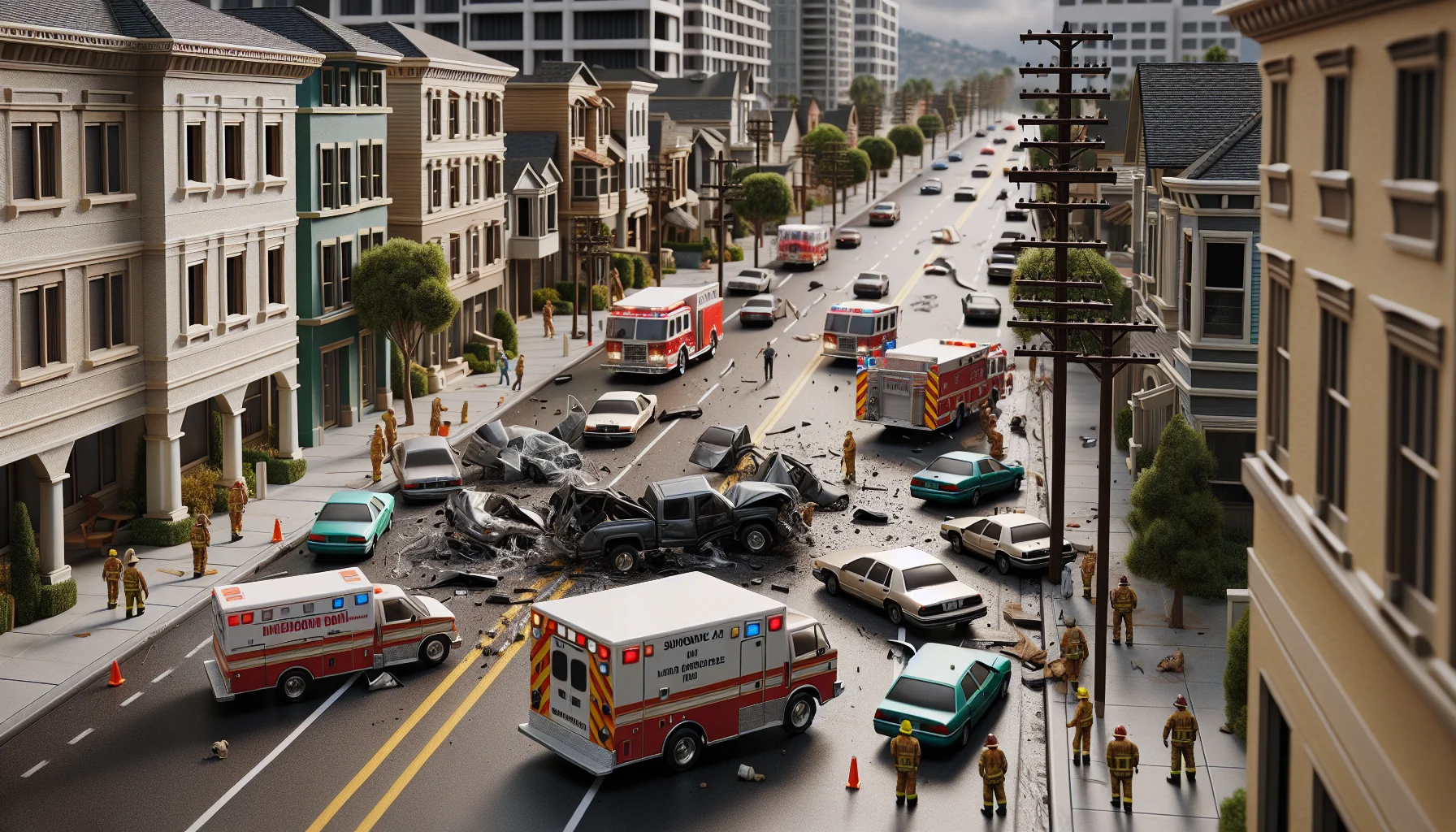
1995 San Diego Tank Rampage
by: The Calamity Calendar Team
May 17, 1995
A Chaotic Evening in San Diego
As the sun began to dip below the horizon on May 17, 1995, San Diego residents could not have imagined the chaos that would unfold on this ordinary spring evening. In a bizarre twist of events, a routine Wednesday turned into an unforgettable day defined by fear and destruction, as a hulking M60A3 Patton tank rumbled through city streets, leaving terror and damage in its wake.
The Man Behind the Metal
Shawn Nelson wasn't always the man on the rampage that night. At 35, he had once worn a different kind of armor as a U.S. Army veteran and wielded tools as a plumber. Yet life had taken sharp, unkind turns. Burdened by financial woes, grappling with a methamphetamine addiction, and still reeling from his mother's death, Nelson's life had spiraled out of control. His growing instability didn't go unnoticed—law enforcement had become all too familiar with Nelson in recent months, often stepping in for his erratic behavior.
For those who knew him, the signs were there, written in the vacant stare of a man who had lost his grip on the life he once managed. But no one could have predicted the chain of events that would lead him to the California Army National Guard Armory that fateful evening.
From Armory to Mayhem
Around 6:30 PM, Nelson breached the armory's minimal security, slipping through vulnerabilities that had gone unnoticed—or perhaps unaddressed—until now. With unsettling ease, he located an M60A3 Patton tank and drew on past military training to start the mechanical beast.
What began as an audacious, perhaps desperate act quickly morphed into sheer mayhem. The tank, a near 60-ton demonstration of military might, was now his instrument of discord as he maneuvered off the armory grounds and into the unsuspecting veins of San Diego's infrastructure.
Twenty-Three Minutes of Destruction
With the tank now an extension of his troubled mind, Nelson steered it through residential neighborhoods, the screech of crushed vehicles echoing like distress signals as he rolled on. Utility poles bowed under the tank's weight, traffic lights flickered out of existence, and innocent parked cars were upturned, reduced to metal carcasses littering the roads.
Thanks for subscribing!
For twenty-three minutes, Nelson spread destruction, his path marked by the destruction of property worth hundreds of thousands. In a terrifying game of cat and mouse, law enforcement scrambled, strategizing how to halt the hulking machine without further loss of life.
As the tank veered onto the interstate, its destructive march was abruptly interrupted—it wedged itself on the concrete median of Interstate 805, the roadblock proving its undoing.
Ending the Rampage
With the tank immobilized, officers seized a rare opportunity. Under guidance from the National Guard, they climbed the vehicle and opened the hatch. Chaos tipped into desperation as police took the fatal shot that ended Nelson's life and brought the pandemonium to a sudden, haunting calm. Miraculously, only one life was claimed in the rampage, leaving behind ruined landscapes but sparing the innocent bystanders whose lives had been turned upside down.
After the Dust Settled
In the wake of Nelson's explosive last act, San Diego found itself in recovery mode. The structural damage was pronounced—crushed cars, splintered light poles, uprooted fire hydrants—a visual testament to an event that was as shocking as it was unprecedented.
The incident sent ripples far beyond the immediate vicinity, prompting an urgent re-examination of security protocols at National Guard bases nationwide. The frightening ease with which Nelson accessed and commandeered a war machine made glaringly apparent the weaknesses in military security measures.
Lessons and Legacy
The rampage thrust into the limelight two critical subjects: the pressing need for reinforced security and a glaring spotlight on veterans' mental health challenges. This incident became a sobering catalyst for change, sparking policy revisions not just in infrastructure security but also in the support systems dedicated to veterans struggling with mental health issues.
Today, the story of the unsparing path of that tank in 1995 stands as a reminder of those urgent conversations. While the scars on San Diego's streets have long since healed, the discourse on ensuring robust support systems for veterans—alongside vigilant security measures—remains very much alive. The narrative of Shawn Nelson’s rampage serves as a somber testament to the potential chaos of an unchecked mind armed with devastating capability, and the ongoing commitment to ensure it isn't repeated.
Stay in the Loop!
Become a Calamity Insider and get exclusive Calamity Calendar updates delivered straight to your inbox.
Thanks! You're now subscribed.